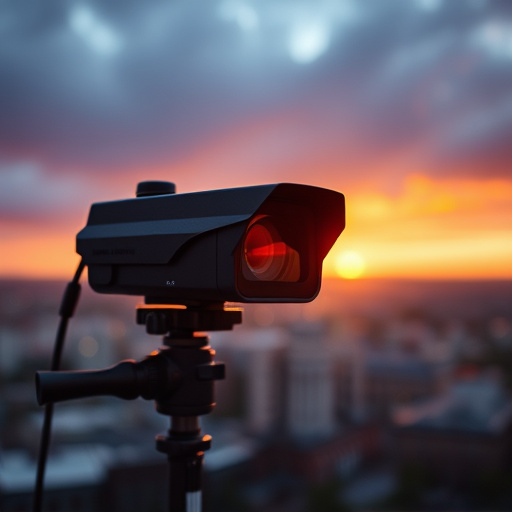Hidden radio frequency (RF) motion-activated spy cameras have advanced with wireless data transmission and battery optimization, making detection challenging yet crucial. Specialized tools like RF signal detectors and energy-efficient sensors aid in identifying these cameras. Proactive monitoring involves using high-capacity lithium-ion batteries and power-saving settings to maximize the operational lifespan of spy cameras, ensuring privacy protection and deterring unauthorized use.
Uncover the secrets of hidden surveillance with our comprehensive guide on detecting radio frequency (RF) signals from motion-activated spy cameras. Learn how these advanced devices operate and equip yourself with tools and techniques to identify them. Explore strategies to enhance battery life for continuous monitoring, ensuring you stay one step ahead in navigating today’s privacy challenges. From understanding RF technology to optimizing power consumption, this guide offers valuable insights into countering hidden threats.
- Understanding Radio Frequency (RF) Technology in Hidden Cameras
- Detecting Spy Cameras: Tools and Techniques for Motion Activation
- Optimizing Battery Life for Continuous Monitoring with Motion Activated Spy Cameras
Understanding Radio Frequency (RF) Technology in Hidden Cameras
Hidden cameras, often referred to as spy cameras, have evolved significantly with advancements in technology, particularly in their use of radio frequency (RF) signals. These devices are designed to capture and transmit images or videos discreetly, making them a popular choice for surveillance purposes. Understanding RF technology is crucial when detecting these hidden cameras, especially those equipped with motion-activated features.
RF-enabled hidden cameras operate by transmitting data wirelessly over specific frequencies, allowing for remote viewing and control. The motion activation mechanism further enhances their effectiveness by ensuring the camera only captures activity, extending battery life in the process. This feature is a double-edged sword, as it can make detection more challenging but also provides valuable insights into the behavior of these devices, enabling users to identify suspicious activities or unauthorized use of surveillance equipment.
Detecting Spy Cameras: Tools and Techniques for Motion Activation
Detecting spy cameras, especially those that operate on radio frequency (RF), requires a combination of specialized tools and techniques to unmask their presence. One effective method is employing motion-activated devices designed to sniff out RF signals. These gadgets can be placed in areas where surveillance is suspected, such as corners or behind objects, and they will automatically activate when movement is detected. This is particularly useful for monitoring environments like offices, homes, or public spaces where hidden cameras might be used to invade privacy.
Motion-activated spy camera battery life is a key consideration for these devices. Modern motion sensors are energy-efficient, ensuring they can operate for extended periods on a single charge. This allows for continuous monitoring without frequent interruptions for recharging. Additionally, many devices come with rechargeable batteries or use standard AA batteries, making them convenient and cost-effective to maintain. With these tools at hand, individuals can proactively safeguard their privacy and deter potential invaders from exploiting hidden cameras.
Optimizing Battery Life for Continuous Monitoring with Motion Activated Spy Cameras
To achieve continuous monitoring with motion activated spy cameras, optimizing battery life is paramount. These devices are designed to remain active and responsive, detecting movements and triggering recordings without constant human intervention. However, the frequent power demands of motion sensors, video recording, and data transmission can deplete batteries quickly. To address this challenge, consider using high-capacity batteries optimized for low-power modes. Lithium-ion batteries with advanced management systems are popular choices, as they offer longer lifespans and more stable performance compared to traditional options.
Implementing power-saving features further enhances battery life. Many motion activated spy cameras come equipped with adjustable sensitivity settings that allow users to fine-tune the device’s response to movement. Lowering the sensitivity reduces false triggers, minimizing unnecessary energy consumption. Additionally, enabling sleep modes during periods of inactivity significantly conserves power, ensuring the camera remains operational for extended periods without compromising performance or battery life.
In the age of advanced surveillance technology, understanding hidden cameras’ radio frequency (RF) capabilities is paramount. This guide has equipped readers with knowledge on detecting RF-enabled spy cameras and optimizing motion-activated spy camera battery life for continuous monitoring. By combining the right tools and techniques, individuals can protect their privacy and stay vigilant against potential threats, ensuring peace of mind in today’s digital landscape.
